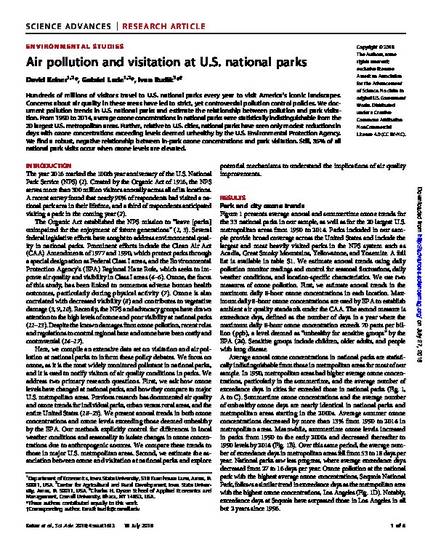
Hundreds of millions of visitors travel to U.S. national parks every year to visit America’s iconic landscapes. Concerns about air quality in these areas have led to strict, yet controversial pollution control policies. We document pollution trends in U.S. national parks and estimate the relationship between pollution and park visitation. From 1990 to 2014, average ozone concentrations in national parks were statistically indistinguishable from the 20 largest U.S. metropolitan areas. Further, relative to U.S. cities, national parks have seen only modest reductions in days with ozone concentrations exceeding levels deemed unhealthy by the U.S. Environmental Protection Agency. We find a robust, negative relationship between in-park ozone concentrations and park visitation. Still, 35% of all national park visits occur when ozone levels are elevated.
Available at: http://works.bepress.com/gabriel-lade/8/

This article is published as D. Keiser, G. Lade, I. Rudik, Air pollution and visitation at U.S. national parks. Sci. Adv. 4, eaat1613 (2018). DOI: 10.1126/sciadv.aat1613.